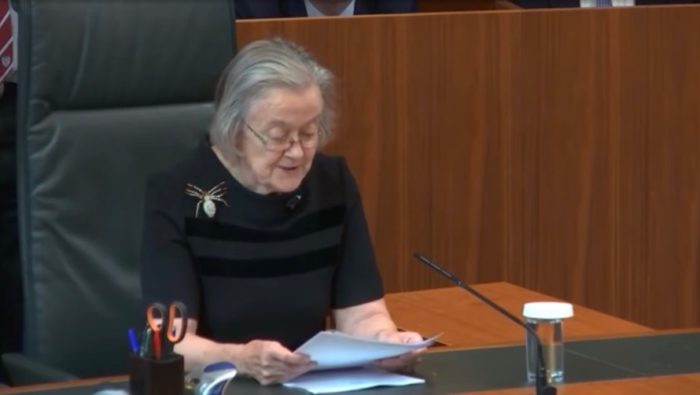
‘Just Looking’: Methodological Challenges Researching the Visual Culture of Law

This post is part of a series profiling recent pieces in a special methodology edition of the Journal of Law and Society.
It is a trite point that doing Socio-Legal research on the visual culture of law involves looking. For those with a capacity to look, the act of looking rarely calls for self-awareness and critical reflection on the nature of that act. It is perhaps therefore not a surprise that methodological questions, about how we look, the impact that this has on what we see, and the potential of the object under scrutiny to inform ways of seeing, have attracted little attention. However, the apparently unproblematic act of looking poses many methodological challenges. Using experiences derived from a long running research project on visual images of judges, including paintings, photographs, and pictures produced for a variety of screen media, I want to reflect here on some methodological challenges.
A little exercise is a useful point of departure. Go to a place where people are invited to look at pictures, such as an art gallery. Watch how they look. Observe the time a person spends looking. Note any activities that accompany looking. For the vast majority, looking at an object lasts a few seconds. It’s also now commonplace that looking is mediated via small screen digital lens technology; the mobile-phone camera.
Methodologically this little exercise raises key questions for researchers about the nature and form of their practices of looking. Researching visual culture demands that you not only look, but that you look longer and develop a sensitivity to the ever-present impact of the mind’s eye; the social and cultural lenses that inform the experience of looking. My experience of working on a database of short videos produced by the UK Supreme Court (UKSC), and available on demand via the court’s website and YouTube channel, will be used to explore the way a cultural lens shaped experiences of looking.
The videos are one of the products of cameras in a court open justice initiative; a ‘transparency project’. Made up of various shots produced by the four cameras located in the corners of each courtroom the judge delivering the summary of the judgment is at the centre of these short videos. Repeated viewing of data set sample indicated that one shot, sometimes several minutes in length, dominates. It is a mid-shot showing a single judge in civilian clothing, sitting at a desk with head bowed reading aloud from a text.
After repeated looking, my response to these videos was that they were a problematic attempt to enhance open justice; tedious to watch and unlikely to either attract or retain an audience. But I became aware that the mind’s eye I unthinkingly deployed was problematic. My looking was informed by a complex of well-established cultural assumptions and expectations associated with small screen pictures produced by the visual media industry over a period of several decades. Most pictures made for the small screen are composed of multiple shots of short duration; of just a few seconds. These are cultural practices of visualisation developed not only to tell stories on the small screen but more specifically to keep audiences watching.
This disruption of my televisual mind’s eye practices and expectations generated two effects. It provoked an exploration of the cultural forms of mass media visualisation for the small screen. The critical distance that this facilitated enabled me to look differently when I looked again at the court’s videos. If the gap between the small screen images produced by the court and those associated with contemporary mass media potentially works against attracting and maintaining an audience, how did it work in the context of a project opening justice to a wider audience? In short, it both promotes that project’s failure and its success. It potentially fails an audience looking through the contemporary industrial practices of production of images for the small screen. What is more, it is likely that viewers will turn off literally and metaphorically as court productions resist well-established techniques that hold the viewer’s gaze. At the same time, the long static shot provides a rare opportunity for viewers to scrutinise what is on screen with less institutional intrusion.
Taking time to examine how you look and how your practice of looking is informed by your culturally and socially formed mind’s eye is not only methodologically necessary but also offers rich rewards. Disrupting the silent operation of the mind’s eye opens opportunities for looking differently. This brings into critical view not only the cultural forms and practices that inform visual objects but also facilitates greater understanding about how these objects work to shape meaning and thereby social and legal relations that are the object of Socio-Legal inquiry. Further related methodological issues relevant to Socio-Legal research in the field are explored in ‘Researching the visual culture of law and legal institutions: some reflections on methodology’, a paper appearing in a special methodology edition of the Journal of Law and Society.

